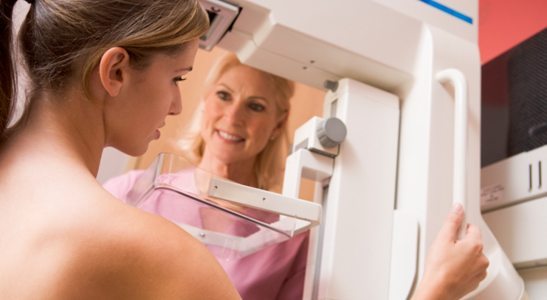They are the healthcare providers that will see 22 percent job growth – more than any other occupation – through 2018. They are the communicators. They bridge the gap in the medical industry. They are the part of the healthcare team that makes sure that the right patient is in the right place getting the right thing done.
They are nurses and they are now taking on more specialized roles, applying advanced technologies and filling voids created by an anticipated shortage of primary care physicians.
“We are encouraging our nurses to return to school to advance their degree,” said Deborah Martin, senior director of professional practice at Banner Health. “Patients are much more complex in our hospitals, as well as in the home and our communities … Nurses need to have higher levels of education to manage these complexities in all settings where nurses practice. Advanced degrees are now required for our upper level nursing managers.”
About 10,000 Baby Boomers reach retirement age every day, fueling the long-term demand for specialized nurses. To help fill that need, Arizona State University implemented the Adult-Gerontology Nurse Practitioner Doctor of Nursing Practice (DNP) concentration.
“It will prepare nurse practitioners to deliver primary care to adults throughout their lifespan with increased emphasis on care of the aging population,” says Katherine Kenny, clinical associate professor and director of the DNP program at ASU.
Johnson & Johnson’s website lists more than 3,000 capacities in which nurses can be employed — from school nurses to jailhouse nurses. Nurses practice in hospitals, schools, homes, retail health clinics, long-term care facilities, battlefields, and community and public health centers. Everywhere there are people, there are patients, and everywhere there are patients, there are nurses.
“Nurses are becoming more influential in the policy changes that are occurring with the Affordable Care Act,” Kenny says. “More nurses are practicing in ambulatory care settings and public and community health.”
Arizona educational institutions are now offering a wide range of educational opportunities which support the nursing profession’s challenge to improve patient care outcomes for individuals, systems, and organizations. And because of skyrocketing healthcare costs, preventative care and education have become integral elements in reducing chronic illness and minimizing re-hospitalization.
“Nurses are now specializing in everything from palliative care and managing chronic illness, to maintenance and preventative care,” says Ann McNamara, dean of Grand Canyon University’s College of Nursing. McNamara says students at GCU are spending more time concentrating on home healthcare and hospice in their new hands-on simulation labs, complete with live actors, computer-operated mannequins, and dynamic patient scenarios.
Angel MedFlight provides air medical transportation services from bedside to bedside. The company’s CEO, Jeremy Freer, says “[Our] nurses are able to put all the components of the puzzle together and make the medical flight process more efficient, effective and compassionate.”
Nurses are also assessing the long-range healthcare needs of patients.
“Where once the hospital nurse’s prime responsibility was to provide the best care possible that the patient needed at that moment, now the nurse is also focused on what happens next,” explains Maggi Griffin, vice president of patient care services at John C. Lincoln Health Network.
Griffin says that patient discharge planning and post-hospitalization follow up are other key roles of the evolving nursing profession.
Advancements in technology have significantly enhanced patient care in recent years. Nurses now have the ability to monitor patient conditions remotely, and electronic health records enable nurses to track, evaluate, and document patient information.
“Technology is opening doors to deliver nursing care in new and innovative ways, often serving as a second set of eyes to enhance patient safety or monitoring patients from their homes,” says Deborah Martin, senior director of professional practice at Banner Health. Martin adds that Medication Bar Coding is another example of how technology is helping nurses be more effective and prevent errors.
Due to the skyrocketing cost of healthcare in general, nurses are becoming more involved in a patient’s primary care.
“As advanced practice providers of healthcare, nurses with master’s and doctoral degrees are able to deliver high quality care to patients in their own individual practice,” Martin says, “as well as work side by side with physicians to provide care in a more cost effective manner.”
“As the major component of hospital rosters, nurses’ salaries account for a significant part of any hospital budget,” Griffin adds. “With financial stresses coming from the economy, from government healthcare program budget cuts and from other areas, nursing is much more tightly controlled.”
A decade ago, nursing shifts were scheduled regardless of room occupancy. Currently, industry experts say those staffing schedules fluctuate based on patient population in each unit.
The other major shift is in the demand for specialized nurses. Julie Ward, chief nursing officer at St. Joseph’s Hospital and Medical Center, says specialties have nurses working in both the inpatient and outpatient settings.
“We are also exploring roles for nurses to shepherd groups of patients through the maze of care,” Ward says. St. Joseph’s nurses make follow-up phone calls to patients to ensure the patient is safe and able to follow their discharge instructions, Ward says.
Still, the primary evolution of the nursing industry has been in higher education. Gone are the days when nurses were simply bedside attendants. Now, they are replacing the expensive medical doctors and are running their own practices as Family Nurse Practitioners (FNPs) and in other upper level specialties. Most hospitals are encouraging their nurses to return to school to improve their knowledge base and advance their degrees.
The Robert Wood Johnson Foundation (RWJF) and the Institute of Medicine of the National Academies (IOM) launched a two-year initiative to respond to the need to assess and transform the nursing profession. The IOM appointed a Committee on the RWJF Initiative on the Future of Nursing for the purpose of producing an action-oriented blueprint for the future of nursing. Through its deliberations, the committee developed four key messages:
* Nurses should practice to the full extent of their education and training.
* Nurses should achieve higher levels of education and training through an improved education system that promotes seamless academic progression.
* Nurses should be full partners, with physicians and other health care professionals, in redesigning health care in the United States.
* Effective workforce planning and policy making require better data collection and information infrastructure.
“We are encouraging our nurses to return to school to advance their degree,” Martin says. “Patients are much more complex in our hospitals, as well as in the home and our communities. As noted by the IOM, nurses need to have higher levels of education to manage these complexities in all settings where nurses practice. Advanced degrees are now required for our upper level nursing managers.”




